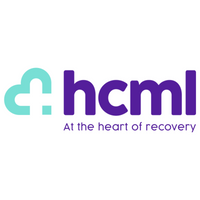Why benefits must keep pace with changing workplace health needs
Health and wellbeing has become a focus for many employers in recent years. Once perhaps considered the domain of the NHS, there has been a shift towards employers taking greater responsibility in their duty of care to employees.
Also, there has been an emergence of health conditions that were not previously widely recognised as ones that should be addressed in the workplace. Employers who are further forward in their health and wellbeing strategies are reaping the benefits of what happens when these conditions are properly addressed and managed.
Not ‘traditional’ concerns
Gender health is a huge topic in the workplace. Part of that is menopause. More than half of the world’s population will experience menopause and currently 80% of those going through symptoms are in work (Fawcett Society Report, 2022).
One in four people experiencing menopause consider leaving their job during this time, while one in 10 have left the workplace as a result. While menopause may be considered a taboo subject in the workplace, more progressive employers are tackling these issues to retain talent.
The biggest step is acknowledgment and education. Then it’s about consideration for specific needs e.g. enabling staff to take regular breaks, ensuring uniforms are comfortable, adjusting temperatures in the working environment and ensuring managers are equipped to have sensitive conversations.
Another area that has only recently been considered in the workplace is neurodiversity. More than 15% of people in the UK are thought to be neurodivergent – meaning their brains interpret and process information differently to the typical way that society expects. Its prevalence has dramatically increased as society begins to understand and accept that neurodivergence includes a wide of conditions such as ADHD, autism, dyslexia and dyspraxia. .
Many organisations are learning to embrace neurodiversity in the workforce, that it can give them a competitive edge in terms of talent acquisition and creating an inclusive culture. For example, ADHD can present in different ways including alertness and ability to hyperfocus, excellent problem-solving skills and strong visual skills.
Some of the challenges they may have include sensory overwhelm, lack of attention to detail and difficulty concentrating. As such, employees with ADHD may benefit from a structured workday, regular and immediate feedback.
Age-related illness
Age is a factor we have to take into consideration for many health conditions. A big focus for the measures announced in this year’s Spring Budget was the need to get people back to work.
The government’s response included pledging more occupational health support, with a focus on mental health and musculoskeletal conditions, and attracting the over-50s back into work through apprenticeships. How this will work in practice remains to be seen, but it demonstrates not only the changing needs in employee health, but also those that are imminent.
The ONS’s Labour Force Survey 2022 found a rapid rise in long-term sickness among younger age groups, with a 42% relative increase among 25 to 34-year-olds compared with a 6% increase among 35 to 49-year-olds. Mental health conditions were the main contributor.
Although long-term sickness did not rise as rapidly in the 50 to 64-year-old age range, it remains the group that has the highest level. Increases in ‘other health problems or disabilities’ were largest this age range, at 64%.
With the focus on getting over-50s back into work, employers are going to have to be prepared to support their health. Private medical insurance schemes might be the obvious choice but can ultimately be costly.
Improving health risk identification has significant benefits for employees, employers and wider society, mitigating unnecessary medical treatments and ultimately reducing the cost of ill-health for all. It also helps attract skilled workers people back into work if they know their health is going to be taken care of.
Prevent instead of treat
Traditional occupational health has a clinical focus and is designed to ‘fix’ the problem. For example, an employee with a bad back may be offered physiotherapy. Another may be experiencing depression and anxiety and receive counselling or talking therapy.
Treating symptoms in isolation may provide a temporary fix, but addressing the wider influences on health goes much further in preventing ill health and offers a personalised approach.
Organisations whose health and wellbeing strategies focus on offering comprehensive wellbeing benefits, training leaders to identify the signs of ill health and how to support employees, and create a workplace culture free of stigma, are seeing a tangible return on health and wellbeing investment and employee experience.
Supplied by REBA Associate Member, HCML
HCML is a health and wellbeing provider, offering integrated and personalised healthcare solutions.








